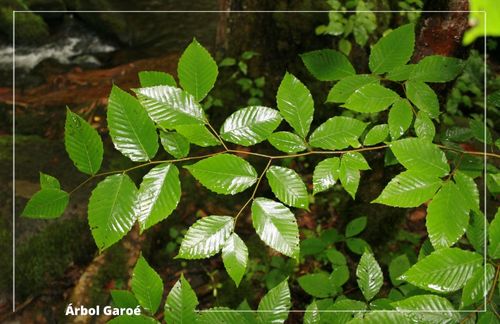Garoé Tree of Iron Island
A source of life is located high on the island of El Hierro, a tree that served as a natural freshwater resource for the aborigines and that today is considered a treasure for the island and a natural symbol of the place. Today you will know everything about the Garoé Tree.
The Garoé tree, source of water
If we talk about natural treasures, on the island of El Hierro de las Canarias there is not only a treasure, but a sacred element since long before the conquest and that until today, is venerated as a symbol of natural wealth, sustenance and what was at one time a source of water for the bibanches.
This is the Garoé tree, which is located 1000 meters high in the Valverde municipality of El Hierro Island, northeast of it. This location is precisely what gives the tree its virtues, unique in the whole world.
It is so special that its characteristics and benefits make it seem that it is a miraculous tree but that they are really due to two natural phenomena that allow this tree to be a constant source of fresh water, obtained from the clouds and the volcanic soil of the island that is under its roots.

It is a til, which is able to absorb and store rainwater through its bark, branches and leaves and from the ground through its roots and at the same time supply the population of El Hierro.
In the time of the bibanches before the conquest this was their main source of fresh water, from which they lived and supplied the entire population. In fact, the importance of this tree was so great that the aborigines began to worship it as a divine element.
According to legend, the name Garoé was given by the Bibanches, who were the first settlers of the island el Hierro. It is said that the original til, called Garoé, was a giant tree with a bark about one and a half meters in diameter.
It was the main source of water, and its location on a slope in the region of Tiñor allowed that when the trade winds came, the clouds bathed the tree with water and of course the soil where it was planted.
By capturing all the water from the clusters and the soil, the tree had the ability to distill fresh water that was collected in large hollows made by the bibanches to store and distribute it.
When the Castilian conquerors arrived on the island, the bibanches tried to hide this wonderful tree so that the conquerors would retreat without discovering this natural treasure.
It was not possible to hide it for a long time, since one of the aboriginal women, who according to legend, fell in love with one of the soldiers who colonized the island, was the one who revealed to the conquerors the location of the tree, and although it was punished with death the Castilians quickly began to take advantage of its benefits.
In 1610 the island was hit by large rainstorms and strong winds, which devastated this gigantic tree, ending with this source of water. Unfortunately this caused the disappearance of the Bibanche people when their main water reserve disappeared.

Later in 1949 a til with similar properties was replanted in its place that today is protected by an Interpretation Center and by a "water route" created in honor of the legend of the Garoé.
Today the Garoé tree, whose name means in aboriginal "lagoon" or "river", is still an important symbol for the islanders, forming part of the shield of the island, in which it is represented as a green tree with a round crown on which is a cloud that sprays water on it, as a representation of the phenomenon that occurs with this tree.
Til, a tree endemic to Macaronesia
Although it is believed that the original and sacred tree called Garoé, possessed unique properties, it is really possible that it was a specimen of the species Ocotea foetens which is the scientific name of the tree that is normally known as til or linden.
This species has precisely the properties described above about the original. It usually has a slender trunk with a height that can be found between 20 and 30 meters high.
It is precisely this feature that allows it to collide with the lower clouds brought by the trade winds and absorb the water from them. It is a tree with abundant branches which are surrounded by leaves arranged alternately and with flowers in sparse clusters.
The bark of this tree is dark gray with round, whitish bumps. It emanates a soft, sweet and pleasant smell. Being a tree with a lot of water, its fruits are fleshy and olive-shaped.
The latter have a persistent bark around them that makes them resemble small acorns, this falls off the moment the fruits ripen, which go from being intense green to purple or blackish. When they reach maturity, they detach from the branches and fall to the ground.

Garoé Tree Interpretation Center and Water Route
Just 500 meters from the Garoé tree, an interpretation center was created, where you can find a museum that tells the legend and context of this tree.
It shows the archaeological wealth related to it and that is also accompanied by the famous "Water Route", a 16 km walk that will take you to know the importance and history behind the water that emanated from the Garoé.
The phenomenon of horizontal rain
In the interpretation center of the Garoé tree, you can also learn more about the phenomenon of horizontal rain, a natural phenomenon that occurs in high and wooded areas where trees meet the lowest clouds.
In this phenomenon, plants condense the water absorbed from the clouds and form in their crusts water droplets that precipitate allowing streams and water flows to grow.
